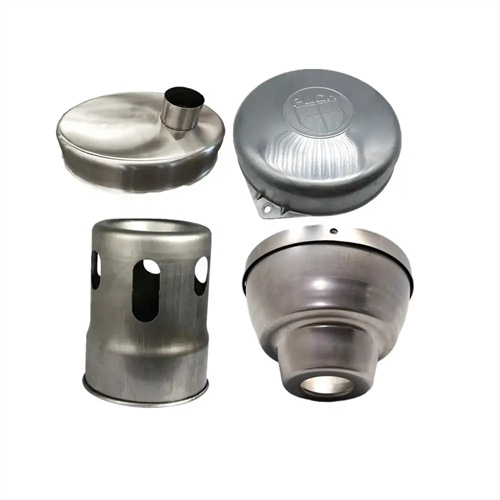Hot rolled steel sections for railway gauge plates
Hot-rolled steel sections for railway gauge baffles are key components in railway track systems. They are primarily used to secure rail positions, adjust track gauges, and ensure train stability and safety. They are indispensable for track projects on conventional and high-speed railways. This type of steel is typically manufactured from carbon structural steels such as Q235 and Q345, or low-alloy high-strength steels. It has a tensile strength of 375-500MPa and a yield strength of ≥235MPa. It possesses excellent toughness and wear resistance, and can withstand the impact and lateral forces of passing trains. Its cross-sectional shape is a special, special-shaped structure consisting of a baffle, neck, and base. Extremely high dimensional accuracy is required, with a cross-sectional tolerance of ±0.5mm and a flatness deviation of ≤1mm/m to ensure precise fit with the sleepers and rails.

The production process for hot-rolled steel sections used in railway gauge plates centers on special-shaped pass rolling, requiring precise pass design and controlled rolling parameters. First, continuous-cast billets (120-150mm side length) are used as raw material and heated to 1150-1200°C in a walking-beam furnace to ensure optimal plasticity. The heated billets then enter the roughing mill, where they are rolled into their approximate cross-sectional shape through 3-5 passes. During roughing, the reduction in each pass is controlled (15-25%) to avoid cross-sectional distortion caused by uneven deformation. During the intermediate and finishing rolling stages, universal mills and specialized pass-type rollers are used to gradually adjust the cross-sectional size and shape of the steel section. Finishing temperatures are controlled at 850-900°C, and rolling speeds are maintained at 1-3 m/s to ensure that all sections of the section are fully filled. After rolling, the steel sections are naturally cooled to below 300°C on a cooling bed, then straightened and cut to length, and finally undergo cross-sectional dimension inspection and mechanical property testing to ensure that the products meet standard requirements.

Hot-rolled steel sections are the most widely used for gauge plates in conventional railway track systems, requiring them to withstand complex road conditions and loads. Freight railway gauge plates, bearing the heavy loads of freight trains, are made of Q345 low-alloy steel. Its high strength ensures deformation even under heavy loads (up to 25 tons axle load). Using this steel section on a dedicated freight line has extended the replacement cycle of gauge plates to over eight years. Curved sections on mountain railways utilize steel sections with thickened necks to withstand greater lateral forces and prevent rail displacement. Gauge deviation on curved sections on one mountain railway is controlled within ±1mm. At turnouts, gauge plates must withstand frequent train changes of direction. High-toughness steel sections (impact energy ≥ 34J) are used. At one hub station, these gauge plates remain intact after withstanding one million train impacts.

High-speed railways place even stricter performance requirements on the hot-rolled steel used in gauge plates, which must meet the demands of high-speed and high-stability operation. High-speed rail tracks operating at speeds of 350 km/h utilize high-precision gauge plate steel, with a cross-sectional tolerance of ±0.3mm, ensuring a gauge deviation of ≤1mm. Test data from a certain high-speed rail line shows that the use of this steel improves train operation smoothness by 20%. The gauge plates of ballastless track systems are rigidly connected to the track slabs. High-strength steel (Q345) is used, after quenching and tempering, to achieve a hardness of HB180-220, maintaining dimensional stability under long-term loads. The gauge plates of a certain high-speed ballastless track have shown no noticeable deformation after five years of operation. For high-speed rail lines in extremely cold regions, gauge plate steel must exhibit excellent low-temperature toughness, with an impact energy of ≥27J at -40°C, to prevent brittle fracture in winter. This performance ensures winter operating safety for gauge plates on a high-speed rail line in Northeast China.

With the advancement of railway technology, the performance and production processes of hot-rolled steel sections used in railway gauge plates continue to improve. Manufacturers have developed weather-resistant gauge plate steel sections (with the addition of alloying elements such as chromium, nickel, and copper). When used on railways in coastal and humid areas, this section boasts a 50% increase in corrosion resistance and a service life of up to 15 years. To meet the high-precision requirements of high-speed railways, online heat treatment technology is employed to achieve dimensional accuracy of steel sections within ±0.2mm, increasing the product qualification rate to over 99%. In terms of green manufacturing, the promotion of short-process rolling processes has reduced energy consumption per ton of steel by 10%, and one steel company’s gauge plate steel production line has achieved zero wastewater discharge. In the future, with the expansion of the high-speed rail network and the development of heavy-haul railways, hot-rolled steel sections used in gauge plates will develop towards higher strength, higher precision, and greater weather resistance, providing key guarantees for safe and efficient railway transportation.
